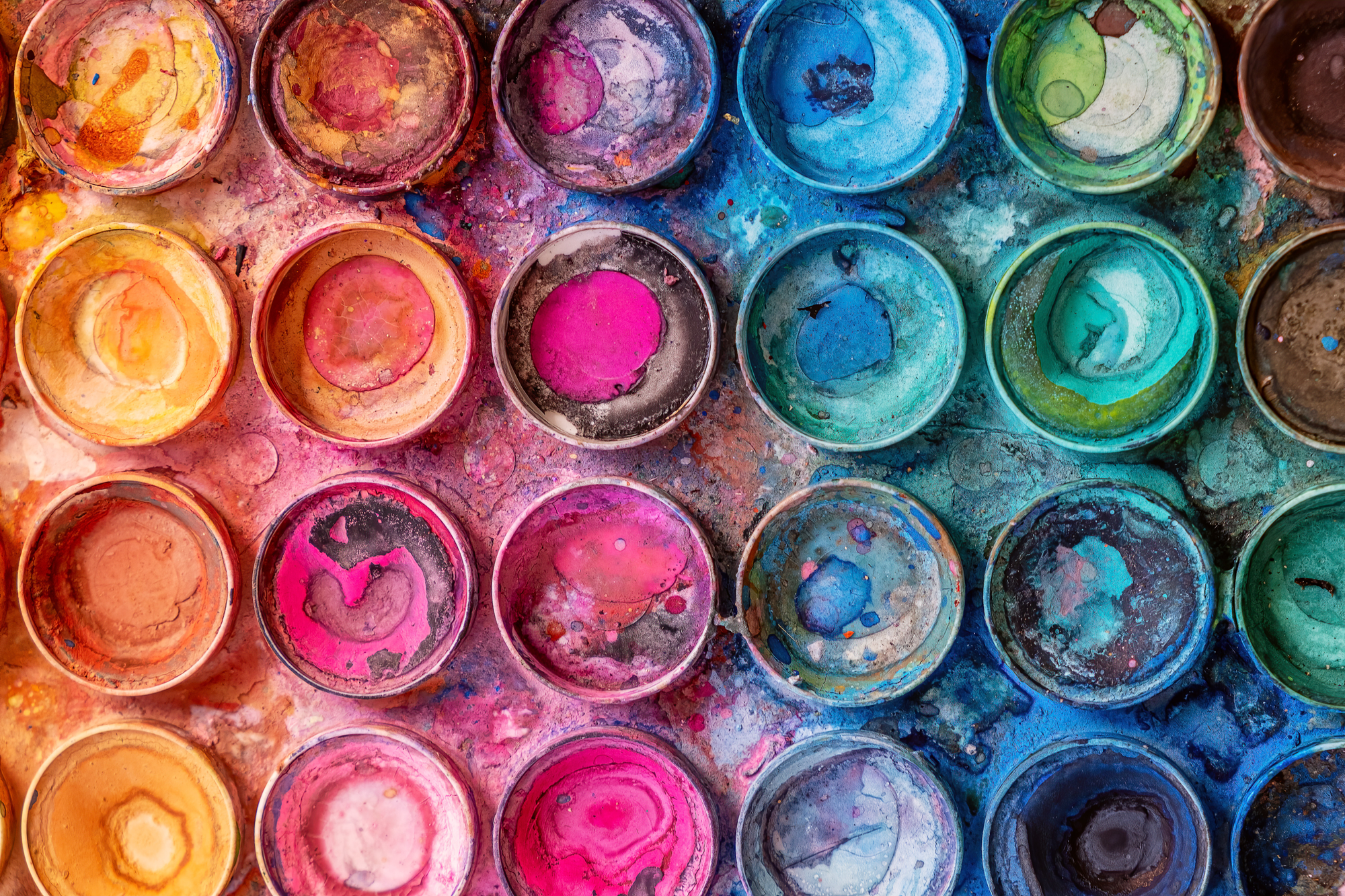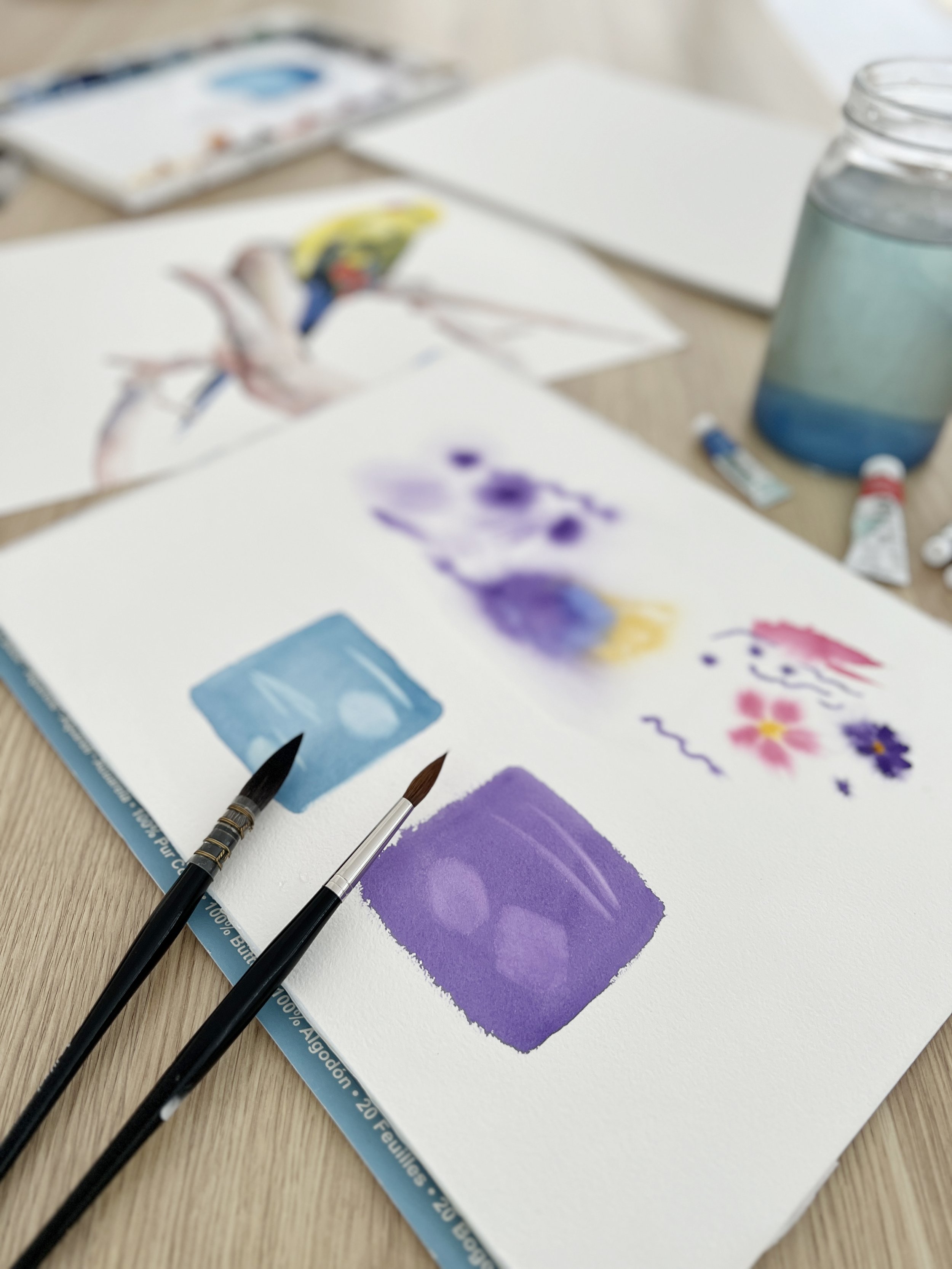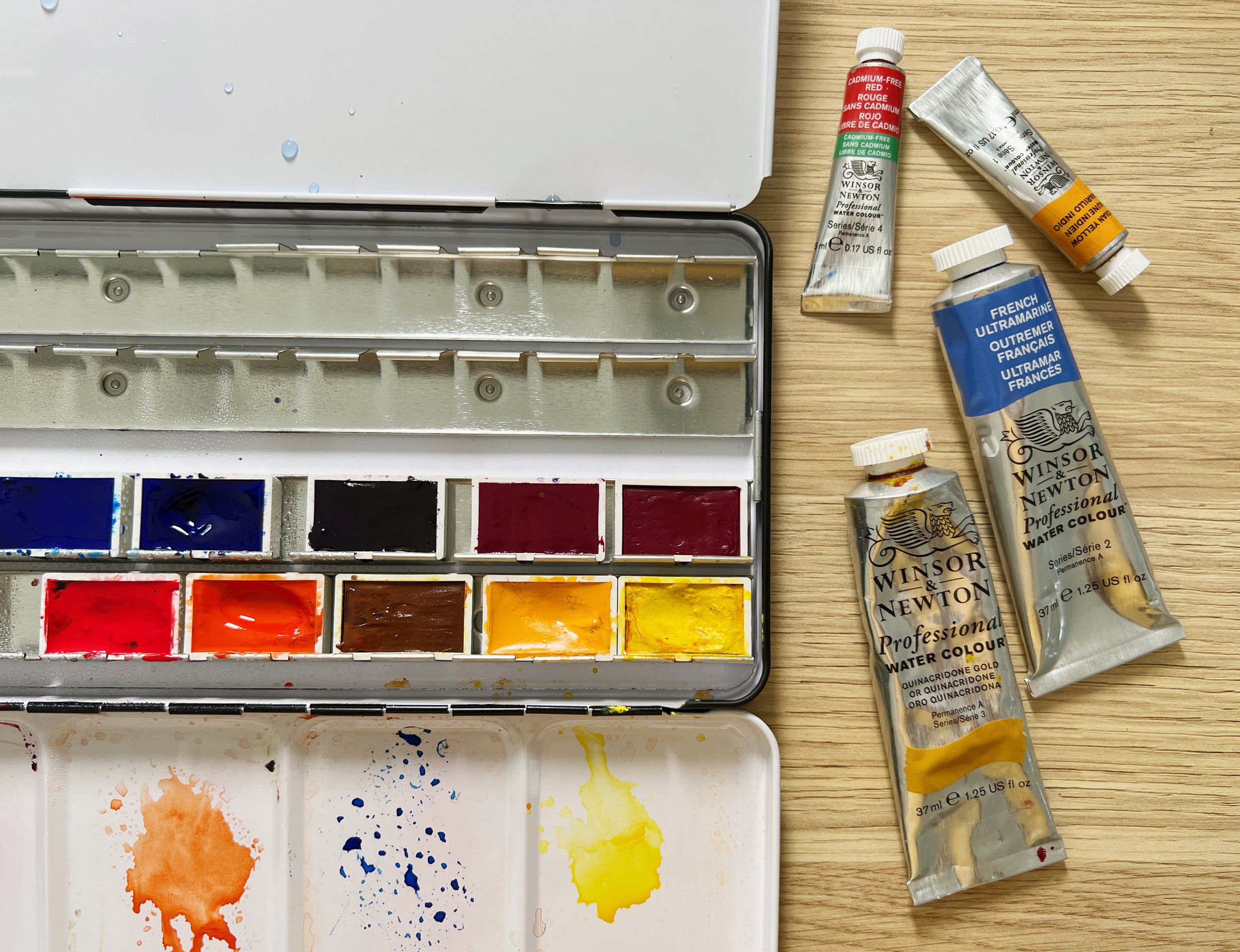It is possible to use gouache and watercolour together in a painting, but it is recommended to apply gouache towards the end of the painting process due to its reactivity with water. Also, as I mentioned, gouache is an opaque medium that can cover watercolour, whereas watercolour is transparent and cannot cover gouache.
Read MoreI find painting on watercolour blocks to be a frustrating process. Despite my best efforts, I often end up with puckered paper and the resulting hills and valleys make for an unpleasant painting experience. I paint with a lot of water though, so maybe if you paint with a drier painting process you might find them suitable to paint on.
Read MoreThis brush is perfect for creating highlights on a watercolour painting after the paint has dried.
It’s a flat, stubby brush with stiff bristles. It’s stiff enough to remove the dry paint but soft enough to not damage the paper.
Read MoreOne major difference between pan paints and tube paints is their form of packaging. Pan paints come pre-dried in a plastic or metal container where they can be easily stored, while tube paints are packaged in small containers with a twist-off cap that contains wet paint.
Read MoreKnowing these pigment codes can help you identify specific colours and their properties, including lightfastness, opacity, granulation and staining qualities. This information can be invaluable when selecting watercolour paints to create your artwork. It also enables you to mix colours accurately and hopefully achieve the desired results every time.
Read MoreThe two most popular types of paper for watercolour painting are cotton paper and rag paper. While the terms "rag" and "cotton" are often used interchangeably, there are slight differences between the two.
I’m going to get a bit technical here so bear with me.
Read More




